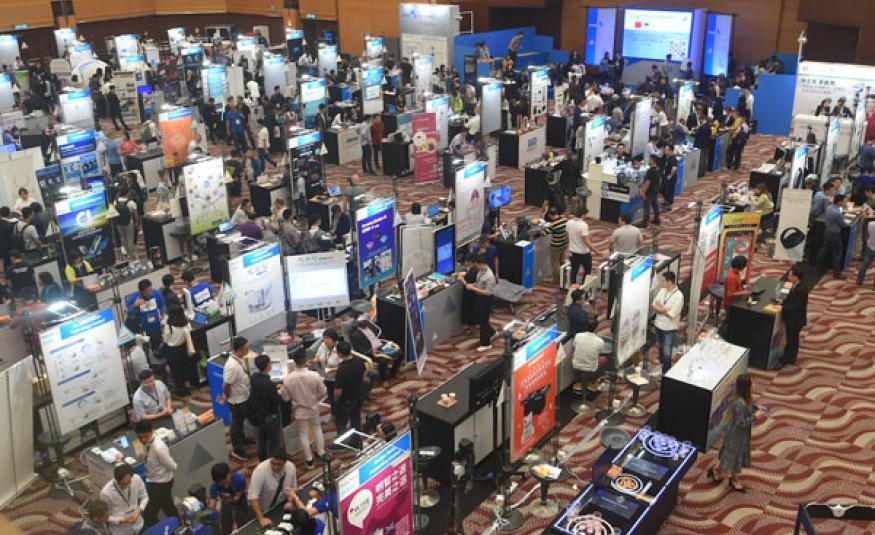The recently concluded 38th HKTDC Hong Kong Electronics Fair (Autumn Edition) and the 22nd electronicAsia attracted 87,000 buyers from 139 countries and regions over a four-day period.
Buyer attendance grew from a number of countries and regions including mature markets such as Canada, Italy, Singapore, Taiwan and the UK, and emerging markets such as Brazil, the Chinese mainland, India, Indonesia, Malaysia and Russia.
More than 63,500 buyers visited the Autumn Electronics Fair while over 23,400 visitors attended electronicAsia.
The Electronics Fair was organised by the Hong Kong Trade Development Council (HKTDC), while electronicAsia was jointly organised by the HKTDC and MMI Asia.
HKTDC Deputy Executive Director Benjamin Chau said: "In the face of global economic uncertainty, Hong Kong companies are pushing to strengthen R&D and develop new technologies in a bid to launch innovative electronic products. At the two fairs, we saw how they are successfully applying advanced technologies such as artificial intelligence (AI) and augmented reality (AR) to a wide range of electronic products, attracting the attention of global buyers.”
He added that thematic zones at the fairs, such as the Tech Hall and Hall of Fame, helped to meet the needs of the industry while a series of events at the Autumn Electronics Fair helped to introduce the products and technologies of start-up companies to potential buyers, partners and investors.
The HKTDC commissioned an independent survey during the trade fair, interviewing a total of 1,043 exhibitors and buyers on the outlook for the electronics market and new product trends.
Some 60% of respondents said the recent Sino-US trade friction has had a negative effect on their export performance, and 40% of respondents said they expected their company's overall sales to grow this year – the figure is 13% points lower than the proportion that gave the same response in 2017.
In terms of markets with growth prospects, survey respondents view Japan as the most promising traditional market (75%), followed by South Korea (73%) and Western Europe (72%), while the Chinese mainland (77%), Middle East (76%) and ASEAN countries (76%) are seen to have the best prospects among emerging markets.
In terms of product trends, the survey reveals that audio-visual products (17%) have the most growth potential in 2019, followed by electronic/electrical accessories (14%) and digital imaging (9%).
For AR and virtual reality (VR) devices, almost 80% of respondents are optimistic about the market development in the next two years, while most respondents think that mobile and online games (57%) and audio-visual entertainment devices (45%) have the largest market potential.
For robotics applications, 67% of respondents say they are optimistic about market developments in the next two years, with entertainment purposes such as toy robots (40%) having the largest market potential, followed by home applications such as vacuum cleaners (36%) and medical applications such as rehabilitation treatments (24%).
Australian buyer Jaka Exstrada took part in the Autumn Electronics Fair for the first time and said he had identified six potential suppliers of advanced driver-assistance systems and breathalysers through the HKTDC business matching service, and plans to buy a container of products from each supplier after the fair. He also placed an order with an existing supplier from the Chinese mainland for air quality products worth US$200,000.
At electronicAsia, Malaysian buyer CH Ooi placed an order worth up to US$60,000 for liquid-crystal displays (LCDs) and measurement instruments. He said that talks were also underway with several new suppliers from the Chinese mainland for GPS-related tracking devices, including sensors and cameras, and the potential orders could be valued up to US$200,000.
Hong Kong Electronics Fair (Autumn Edition): http://hkelectronicsfairae.hktdc.com
electronicAsia: www.electronicasia.com






